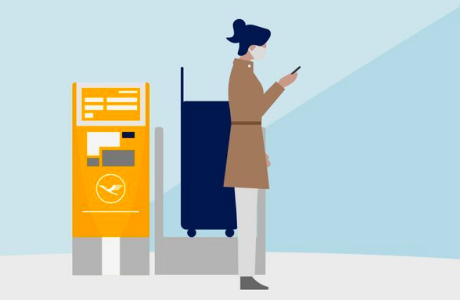With Lufthansa’s Stefan Kapactsis and Christian Dietsch

Passengers wouldn’t know better than to wait in line to check in their baggage with a paper tag, but there now is a better solution brought to them by Lufthansa. With the help of BAGTAG and Publicis Sapient, Lufthansa is the first airline to introduce Electronic Bag Tags (EBTs). Travelers can check their baggage at home so when they get to the airport, they can simply drop their bags and proceed to their gates.
One does not become a pioneer overnight so we asked Lufthansa’s Stefan Kapactsis, Director Digital Travel Services und Christian Dietsch, Product Manager Digital Baggage Service, both highly involved with the project, to share their perspectives.
Why did Lufthansa want to digitalize baggage labeling in the first place?
Kapactsis: This service is yet another step towards our goal: to offer our passengers the best possible digital travel experience at every step of their journey.
Dietsch: Baggage handling is a vital part of the passenger experience and the reason we have optimized the baggage drop customer experience at airports using self bag drop machines in the first place.
Electronic bag tags were the next logical chapter. We strive for travel experiences where the passenger can avoid inefficient waiting lines and thus can enjoy their time at airport and flight experience even
more.
“This service is yet another step towards our goal: to offer our passengers the best possible digital travel experience along every step of their journey.”
Stefan Kapactsis, Director Digital Travel Services Lufthansa
It’s interesting you mention the drop-off points – are EBTs only useful to passengers when you have designated areas at the airport?
Dietsch: The best travel experience is to show up ready to fly at the airport, already checked-in, with your boarding pass on your phone and an electronic bag tag already attached to your baggage.
The clear tendency is to equip more and more airports worldwide with fast bag drop machines. Designated drop only lanes offer the biggest advantage for customers with already tagged bags, but electronic bag tags are of course not restricted to those.
What was the biggest challenge to implementing electronic bag tags?
Kapactsis: I think you’re always wondering if you’re taking the right road. There are so many new developments and technologies these days and there are always more ways to Rome. Implementing electronic bag tags was always a great fit into our digital service strategy. It seemed like a substantial project but the process has turned out to be easy-going and very low maintenance in
resources, mainly thanks to BAGTAG. We just ran the last update and it really works flawlessly.
Dietsch: Indeed, the decision process was quite extensive and we went through many test phases before moving towards this new way of baggage check-in. But now it is great to see how the concept of electronic bag tag evolves and we look forward to seeing our passengers fly with them.

